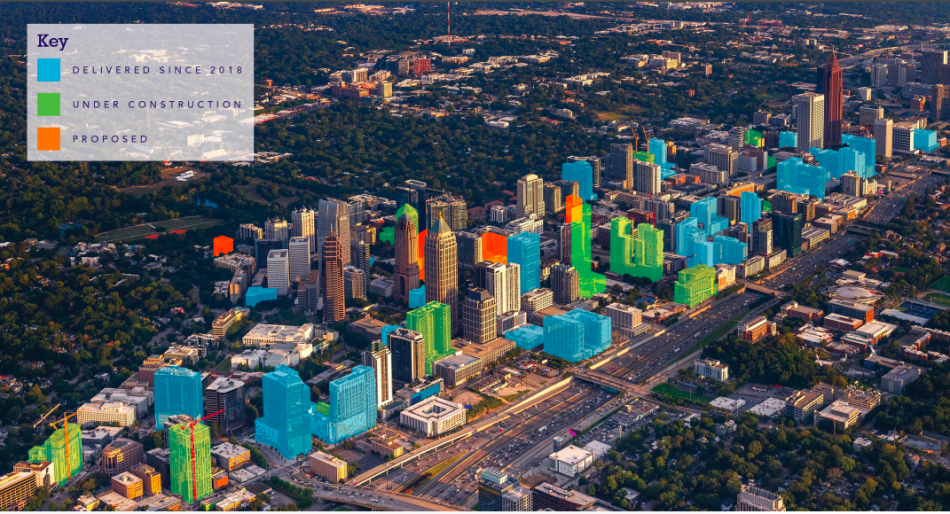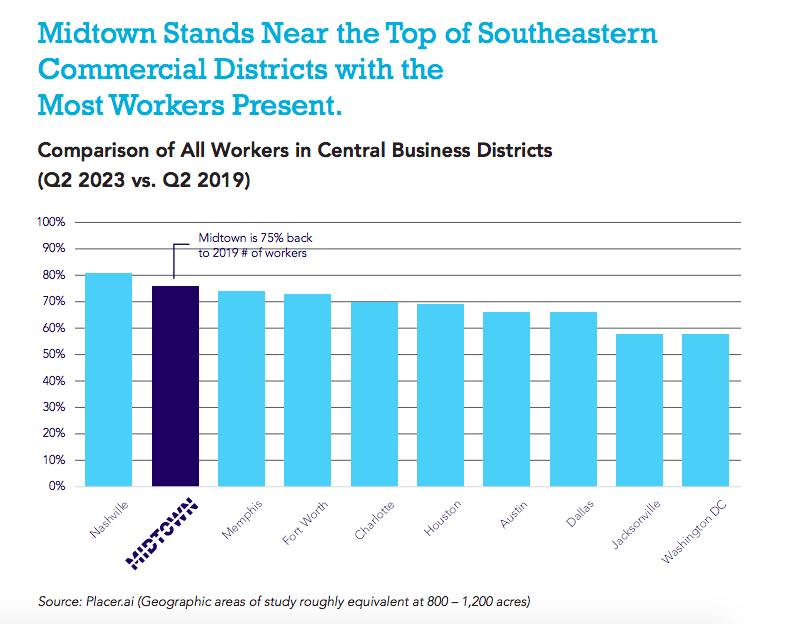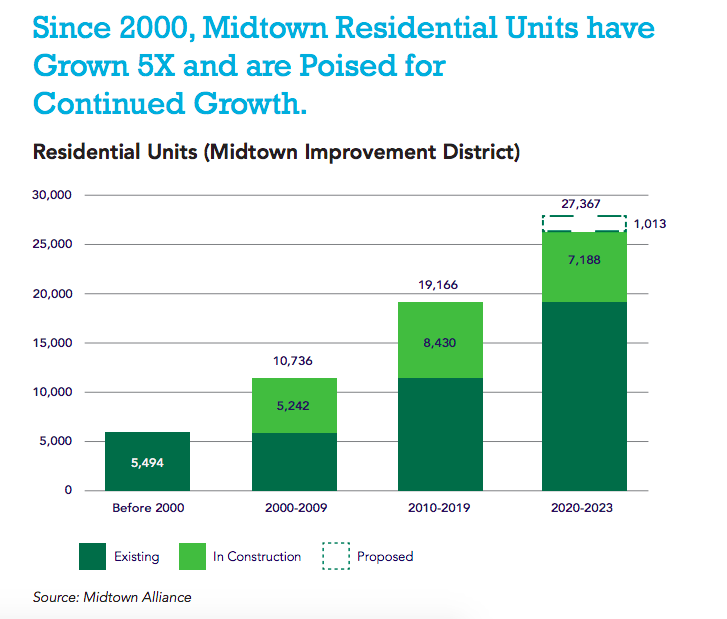As its skyline suggests, few places in Atlanta have changed so radically and fundamentally in recent years as Midtown. But a new report compiled by nonprofit business and community boosters Midtown Alliance that recaps progress across the 1.2-square-mile subdistrict suggests few places in this part of the world have grown so much in a quest to become more vibrant and livable.
Released this week, the Midtown Alliance 2023 Progress Report paints a rosy picture of virtually all urban trends across the increasingly cosmopolitan district, while providing a cornucopia of juicy, statistical tidbits for ATL development wonks.
For example, 2023 saw six development projects deliver in the form of new residential buildings (with 1,400 new units total) and offices (see: the $400-million Emory Winship Cancer Treatment Center), collectively worth $2.7 billion.
That added to a stock of almost 50 new buildings—worth in the ballpark of $13 billion—that's materialized in Midtown over the past five years or is in the pipeline now. In terms of population growth, the report estimates that roughly 60 new people are moving into Midtown every week right now.
“Few places in North America, if any, have experienced as much concentrated development as Midtown Atlanta over the last five years,” reads the report summary. “The many indicators we follow—from foot traffic and new development to bike trips and more—all point to a thriving mixed-use district with a strong appeal for leisure, learning, and livelihood.”
According to Midtown Alliance’s tabulations, 2024 looks to be even more significant on the development front. Eight major projects are on pace to finish this year, injecting another 2,000 residential units, 600,000 square feet of offices, and 71,000 square feet of retail into Midtown.
Speaking of retail, one knock against Midtown is that so many new residential high-rises haven’t been able to fill ground-floor space for shops and eateries, leaving gaps in vibrancy.
The report concedes that, since the depths of the pandemic, 60 retail stores have closed across Midtown. But 80 new concepts have opened, translating to 81 percent of street-level retail being filled.
As of the year 2000, Midtown tallied just 5,494 residential units; counting those under construction now, that number has grown by five times since then. Despite that residential explosion, violent crime in Midtown has plunged 73 percent in roughly the same time period, according to the alliance’s findings.
“Midtown… is among the safest places in the Atlanta region,” the report reads. “Although many may be unaware, incidents of crime in Midtown have fallen to their lowest levels in at least 25 years.”
Regarding the number of workers who’ve come back to the office since 2019, Midtown’s 75 percent trails only Nashville in the Southeast. On a related note, Midtown’s amount of still-coveted Class A office space under construction now dwarfs all other Atlanta submarkets, per Midtown Alliance’s tabulations.
So much growth has prompted efforts to beef up and evolve Midtown transportation options, spurring a simple four-word strategy Midtown Alliance is said to be following: “Happy people on foot.”
Evidence of that in 2023 came with the groundbreaking (at last) of the Juniper Street Complete Street project and progress on the Midtown Art Walk between 10th and 11th streets, among other initiatives.
Another $20 million in capital projects to enhance safety and traffic flow—including 12 new traffic signals—is on tap for 2024, per the agency.
Find more report highlights—and food for thought—in the gallery above.
...
Follow us on social media:
Twitter / Facebook/and now: Instagram
• Midtown news, discussion (Urbanize Atlanta)











